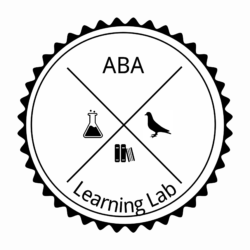James Macon, M.Ed., BCBA
Back to school can be a difficult time for anyone, be it a student, parent, or teacher. It can be especially difficult for our kids with Autism Spectrum Disorder (ASD), which in turn can magnify the difficulty for those closest to them. Waking up earlier to a morning routine, coordinating schedules, working with new teachers and para-professionals, meeting and working next to new students, having significantly more task demands, and having different expectations across environments are but a few of the variables that can make starting the school year so tough. Fortunately, there are many effective ABA strategies that can help prepare our kids for back to school. Below are a guidelines and questions for consideration.
1. Whose in the classroom and why communication is so important
ASD is characterized by core deficits in social behavior and communication, and the presence of repetitive behaviors. If you’re a young student with ASD, there is a very good chance that communicating wants or needs is difficult for you. This can be made worse in a classroom environment, where student-teacher ratios can be strained. Typical teacher student ratios for an ASD classroom can vary, but often range from 1 teacher (or teaching professional) for every 4-6 kids. For many kids who have been receiving Applied Behavior Analysis (ABA) services on a 1:1 basis, the transition to a school classroom means the ability to communicate suddenly becomes 4-6x harder (not accounting for the complexities of peer to peer communication).
ABA can help mitigate this by proactively programming for generalization, and working with teachers and para-professionals to ensure consistency. For example, if we know a child is preparing for or is already in school, we can focus on reinforcing communication skills across different persons, places and settings (including those different classrooms, teachers, and students). We can also try to replicate the look and feeling of a classroom by borrowing stimuli or features commonly found in a school. The goal is to make the setting resemble a classroom so much that our kids learn to perform better in that setting. We can also “train loosely,” meaning teach several variations of the same response. Chances are not all people will respond to the same request, so it is important that our kids with ASD are prepared and capable of asking and answering questions in multiple ways.
2. Rules, and emphasizing what to do
Many times, our kids with ASD have challenging behavior. Classroom rules are often used as a way to help prevent challenging behavior. From a behavioral perspective however, rules can get quite complex. Adults will often describe rules (no yelling, no hitting others, etc), but unless those rules have consequences, they aren’t likely to be effective. In fact, when a person develops an understanding of rules (whether neuro-typical or someone with ASD), it’s usually because they’ve experienced the consequences first, and through operant conditioning, those consequences start impacting whether or not they will repeat the behavior (i.e., a rule). In other words, just describing a rule and hoping someone follows it is probably not an effective strategy
This brings up an important consideration. As a default, many rules are unfortunately punitive. “If you yell, you are going to lose a token.” “If you hit others, you are going to time out.” While these strategies certainly have their place, a better rule-system is to use positive reinforcement for following active behaviors/rules that we want to see more of. For example, instead of “no screaming,” we can label “use our inside voice” instead. Instead of “no hitting,” we can label “keep our hands to our self”. This allows us countless opportunities to reinforce active behaviors that we want to see more of, instead of just focusing on problem behaviors.
3. Teaching Self-Management
As previously mentioned, kids with ASD can have a tough time communicating their wants and needs. They can also have a difficult time transitioning from task to task. Sometimes this is because they don’t like to leave preferred tasks, and other times it because the task they are working on is not finished. Regardless, reinforcing successful transitions and autonomy are critical for future success in school and in the community. ABA can help promote this behavior by teaching self-management skills.
One way to teach self-management and to promote autonomy is to create an individualized schedule. A schedule can be broken into small, manageable chunks of time, often starting with an hour, and building up to 4 or 6 hours over time. Once a schedule template is created, the student and a helper can fill in different expectations and tasks that are necessary for the day (be it school a school, ABA , or home day). Stickers or other visual prompts can be used to reward the completion of slots of time on the schedule. This has the added benefit of helping with transition as well. For our kids who get “stuck” in routines and don’t tolerate sudden changes well, a schedule can also be used to systematically alter the days’ plans to teach our kids to better tolerate those unexpected changes.

